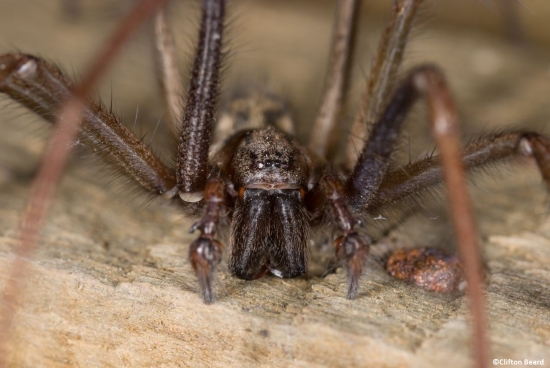News
Four out of five house spiders are males looking for love
- Details
- 19 December 2014
82% of spiders spotted in the Society of Biology’s national house spider survey were males on the search for love.
The survey, which ran from August to November 2013, received 10,000 sightings via the Society’s ‘Spider in da House’ app and website.
Professor Adam Hart FSB, an ecologist from the University of Gloucestershire, said:
“It’s surprising that so many people were keen to take part - I thought spiders were a big turn off but it turns out people are really interested. I was also surprised that so many spiders were male – I’ve seen a few big females in my house but it’s great to know that the perceived wisdom, that they are mostly males out looking for love, is true.”
Each autumn the number of spiders seen indoors suddenly increases as males (of the Tegenaria sp.) go on the hunt for a mate. The Society of Biology launched the survey in collaboration with the University of Gloucestershire to find out more, as well as to help the public get to know the spiders in their homes.
Using photos, identification tools, and spider facts, the free app and website allowed people to identify 12 of the most common species found inside houses, and submit their sightings to the nation citizen science survey.
The sightings roughly correlated with temperature variations throughout the autumn spider season, with more emerging during mild periods. However, only 64% of the sightings were confirmed as Tegenaria sp. (commonly called ‘house spiders’); many reports were of other species which make our houses their home. The second most popular spider (5%) was Pholcus sp., the spindly-legged spider which is often found building webs on ceilings.
Professor Hart said:
"It has been amazing to see so many people get involved and interested in animals that don’t always get the best media attention! By eating flies and other insects, spiders are not only providing us with a pest control service, but are important in ecosystems. We want to encourage people to respect and learn more about their little house guests. And, if you see a big spider in your house, remember, it is probably just a male spider out looking for autumnal loving!”
The survey will re-open in autumn 2015. Meanwhile a new version of the ‘Spider in da House’ app, focused purely on identification and information, has been downloaded nearly 50,000 times this year and is still available on Apple and Android.

